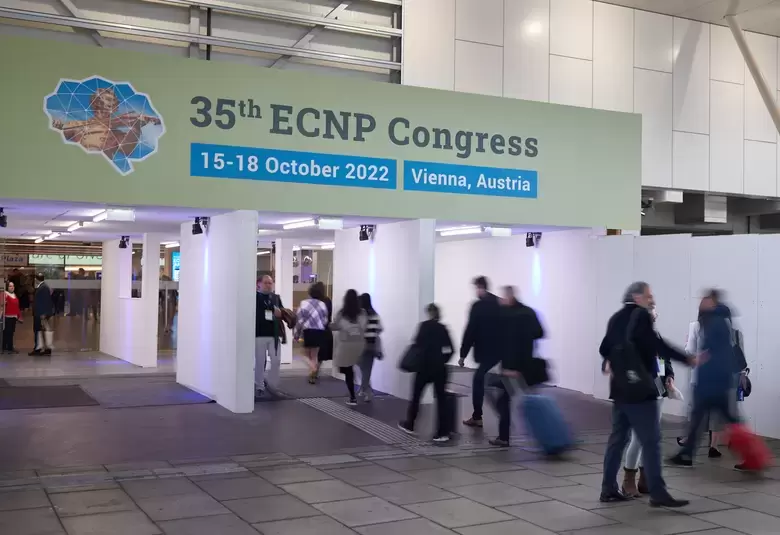When disease-modifying therapy becomes available, screening for Alzheimer’s and its subsequent management will stretch healthcare resources on a massive scale. We need to be prepared. Even with the limited interventions now available, we should pursue the aim of widening opportunities for early diagnosis since there are clear benefits for people with the disease and their families.
질병 조절 치료(disease-modifying therapy)의 이용이 가능해지면 알츠하이머병 검사와 그에 따른 관리 절차로 인한 의료 자원의 수요 규모가 대폭 확대될 것입니다. 이에 대한 대비가 필요합니다. 비록 아직까지는 치료 방법이 제한적이지만, 알츠하이머병의 조기진단은 환자와 가족에게 확실히 도움이 되므로, 조기진단 기회가 확대될 수 있도록 노력해야 합니다.
There is a major mismatch between resources that are available to manage Alzheimer’s disease (AD) and those that may be needed, according to the recent EU RAND report which assessed preparedness in France, Germany, Italy, Spain, Sweden and the UK.1
프랑스, 독일, 이탈리아, 스페인, 스웨덴, 영국의 대비 수준을 평가한 최근 EU RAND 보고서에 따르면, 현재 알츠하이머병(AD) 관리에 이용 가능한 자원과 필요한 자원 간에는 커다란 간극이 있습니다.1
The report makes a number of assumptions, and it has to be said that the first of them – the availability of a disease modifying therapy in 2020 – now looks less than likely. But the point of the exercise makes sense.
이 보고서에서는 몇 가지 가정을 제시하는데, 그 중 2020년까지 질병 조절 치료(disease-modifying therapy)의 이용이 가능해진다는 첫 번째 가정은 실현 가능성이 적어 보입니다. 그러나 이 가정의 요점만큼은 타당성이 있습니다.
Are we prepared for the impact of early diagnosis?
우리는 조기 진단이 가능해졌을 때를 잘 대비하고 있는지?
Let us assume that – whenever such a therapy comes on stream – we will want 80% of potentially eligible people (essentially the 105 million who are aged 55 or over) to be screened. Let us say that half of the 14 million who are positive have further evaluation. Let us further assume that 90% of those who turn out to have mild cognitive impairment (MCI) have biomarker testing, and that half test positive; and that 80% of those people are suitable for treatment. That, according to the RAND calculations, means 2.3 million patients.
다음과 같이 가정해 보겠습니다. 언제가 되든 질병 조절 치료의 이용 가능해지면, 잠재적 질환자(기본적으로 55세 이상 성인 1억 500만명) 중 80%가 검사를 원할 것입니다. 그리고 양성 반응이 나온 1400만 명의 절반이 추가 검사를 받습니다. 경도인지장애(MCI)로 진단 받은 환자 중 90%는 바이오마커 검사를 받고, 절반은 양성 반응이 나오고, 이들 중 80%는 치료에 적합합니다. RAND 보고서의 추산에 따르면 이때 환자 수는 230만 명입니다.
Resources to diagnose and treat AD must be more widely available if we are to maintain the ideal of universal healthcare
알츠하이머 진단과 치료를 위한 자원을 폭넓게 이용할 수 있어야 이상적인 보편적 의료 유지가 가능합니다
To meet that demand for screening and all the steps that follow, we have relatively few specialists. Even if we add up all the neurologists and geriatricians and old-age psychiatrists, there are still only 6.7 per hundred thousand population in France and 24 per hundred thousand in Germany. The other four countries lie between these figures.
현재의 전문가 수는 검사와 이후 절차에 필요한 수요를 충족하기에는 상대적으로 부족합니다. 모든 신경학 및 노인의학 전문의와 노인 정신과 전문의의 수를 합하더라도, 프랑스의 경우 인구 10만 명당 6.7명, 독일의 경우 10만 명당 24명에 불과합니다. 다른 4개국의 수치는 이 두 국가의 중간 수준입니다.
Taking CSF biomarker testing as an example, it is clear that resources must be more widely available if we are to maintain our ideal of the universal availability of healthcare, José Luis Molinuevo, BarcelonaBeta Brain Research Center, Barcelona, Spain, told at an early diagnosis symposium at ADPD 2019.
ADPD 2019의 조기 진단 심포지엄에서 스페인 바르셀로나 바르셀로나베타 뇌연구센터(BarcelonaBeta Brain Research Center)의 호세 루이스 몰리누에보(José Luis Molinuevo) 박사는 CSF 바이오마커 검사를 예시로 볼 때, 보편적 의료가 가능한 이상적 상황을 유지하려면 분명 자원이 좀 더 광범위한 지역에서 이용 가능해야 한다고 말했습니다.
Pursuing a practical, step-wise approach
현실적인 단계적 접근법 추구
In the current context, how should clinicians assess a patient with concerns about cognition?
이러한 상황에서 임상의들이 인지기능에 대한 우려가 있는 환자를 어떻게 검사할 수 있을까요?
We are eventually going to beat this disease, said Alireza Atri, Banner Sun Health Research Institute, Arizona, and Harvard Medical School, Boston, USA. The first step is accurate and timely diagnosis. And the starting point is listening carefully to patient history. It is important to assess prior functioning and the trajectory of change using what you hear from the patient and family members.
미국 애리조나 배너선건강연구소(Banner Sun Health Research Institute) 및 미국 보스턴 하버드 의학대학원의 아릴레자 아트리(Alireza Atri) 박사는 우리는 결국 이 질병을 정복해낼 것이라고 말했습니다. 첫 단계는 정확하고 시기적절한 진단입니다. 이 단계의 출발점은 환자의 병력에 신중하게 귀를 기울이는 것입니다. 환자 및 가족들과의 상담을 바탕으로 기존 기능 상태와 변화 과정을 진단하는 것이 중요합니다.
There is no biomarker for patient history: you assess past functioning and trajectory of change
환자 병력에 대한 바이오마커가 없다면? 과거 기능 상태와 변화 과정 진단이 필요합니다
Is there potential for something to be wrong? If there is, the next step is to assess in detail what is wrong. A cognitive assessment such as MoCA (Montreal Cognitive Assessment) is a good tool, which may need to be followed by more formal neuropsychiatric assessment. And then comes the question of etiology. As we age, we accumulate pathologies.
환자에게서 질환의 가능성이 보인다면 다음 단계는 무엇이 문제인지 구체적으로 검사해야 합니다. 이를 위해 MoCA(몬트리올 인지 평가)와 같은 인지 검사가 좋은 수단이 될 수 있으며, 이후 더 공식적인 신경심리검사도 실시해야 합니다. 그 다음으로는 병인을 파악해야 합니다. 노화가 진행될수록 여러 병리학적 요인이 축적됩니다.
Indifference and apathy are often early features of AD, said James Leverenz, Cleveland Clinic Lou Ruvo Center for Brain Health, Ohio, USA. But these are sometimes difficult to distinguish from depression.
미국 오하이오 클리블랜드 클리닉 루 루보 뇌건강센터(Cleveland Clinic Lou Ruvo Center for Brain Health)의 제임스 레버렌즈(James Leverenz) 박사에 따르면 주로 무관심과 무감동이 알츠하이머의 조기 증상으로 나타납니다. 그러나 이는 우울증과 구별하기가 어려운 경우가 많습니다.
At this stage, MRI is helpful since atrophy is evidence of a neurodegenerative disease; and focal hippocampal atrophy is the best-established structural imaging marker of AD.
뇌의 위축은 신경퇴행성 질병의 증거이며, 국소성 해마 위축은 알츠하이머의 구조적 이미징 마커로 가장 잘 정립되어 있으므로 이 단계에서는 MRI가 유용할 수 있습니다.
Accurate and timely diagnosis is step one in care
정확하고 시기적절한 진단이 치료의 첫 단계입니다
Beyond MRI, there are the CSF markers, which were considered by Henrik Zetterberg, University of Gothenburg, Sweden, and University College London, UK. Total tau is increased in people with AD dementia, but also in other neurological conditions. Phosphorylated tau, a variant found in tangles, is increased in AD.
스웨덴 예테보리대학교(University of Gothenburg) 및 영국 유니버시티 칼리지 런던(University College London)의 헨릭 제터버그(Henrik Zetterberg) 박사는 MRI 외에도 CSF 마커를 이용할 수 있다고 말했습니다. 총 타우 단백질(total tau) 증가는 알츠하이머 치매 환자에게서 나타나지만, 다른 신경성 질환에서도 나타날 수 있는 현상입니다. Tangle에서 발견되는 이형(variant)인 인산화 타우단백질은 알츠하이머병에서 증가됩니다.
While Aβ40 in isolation is not a reliable indicator of AD pathology, and CSF Aβ42 is decreased in AD – presumably because the protein is aggregated and deposited in the brain – the Aβ40/42 ratio is more informative than either marker alone.
Aβ40은 단독으로 알츠하이머병의 신뢰할 만한 지표가 되지 않고, CSF Aβ42는 알츠하이머병 환자에게서 감소합니다(이 단백질은 뇌에서 응집되어 축적되기 때문으로 추정됨). 따라서 Aβ40/42 비율은 각 마커를 단독으로 고려할 때보다 더 유용성이 높은 정보가 됩니다.
Consider the wider clinical picture
보다 포괄적인 임상 고려
In all of this, the wider clinical picture must play a part, the symposium speakers agreed. No marker should be considered in isolation. And, in moving along the path of investigation, the wishes of patients and families are paramount. Not all want to know in detail what is driving the problem.
심포지엄에 참여한 모든 연사들은 이 모든 것을 고려할 때 좀 더 포괄적인 임상이 필요하다는 데 동의했습니다. 어떤 마커도 단독으로 활용할 때 유용하지 않습니다. 또한 검사 진행 과정에서 무엇보다 중요한 것은 환자와 가족들의 의중입니다. 모든 사람들이 무엇이 문제를 일으키고 있는지 상세하게 알고 싶어하는 것은 아닙니다.
And it is definitely not a case of “diagnose and Adios”, said Alireza Atri. Diagnosis is only the start of a new relationship based on a therapeutic alliance.
또한 아릴레자 아트리 박사는 진단만으로 끝나서는 안 된다고 말했습니다. 진단은 치료를 위한 협력 관계의 새로운 시작에 불과합니다.
Pharmacological interventions can alleviate cognitive symptoms and improve function – even though this is only for a limited period of time. And non-pharmacological interventions such as encouraging cognitive and social engagement and exercise have small but significant effects. There is also benefit from early diagnosis in allowing patients and family to plan for the future. This includes provision for financial guidance, legal support, and patient safety.
약물 치료는 제한된 시간 동안만이지만 인지 증상을 완화하고 기능을 개선할 수 있는 방법입니다. 인지적·사회적 활동 및 운동과 같은 비약물 치료도 작지만 중요한 효과를 발휘합니다. 환자와 가족들이 미래에 대한 준비를 할 때 조기 진단은 또 다른 이점을 제공합니다. 재정 관련 안내, 법적 지원, 환자 안전 등의 제공을 예로 들 수 있습니다.
Educational financial support for this symposium was provided by Biogen
본 심포지엄의 교육 재정 지원은 바이오젠(Biogen)이 제공하였습니다.
본 자료는 Global Lundbeck 의학부에서 선별한 콘텐츠이며, 한국룬드벡의 의견과 다를 수 있습니다




